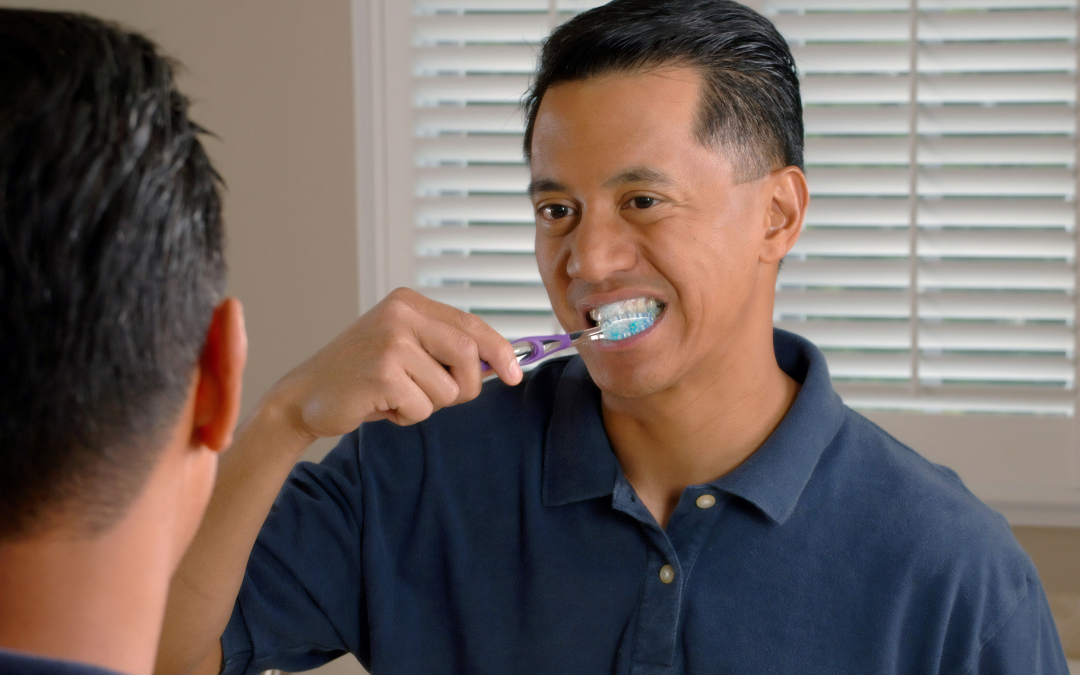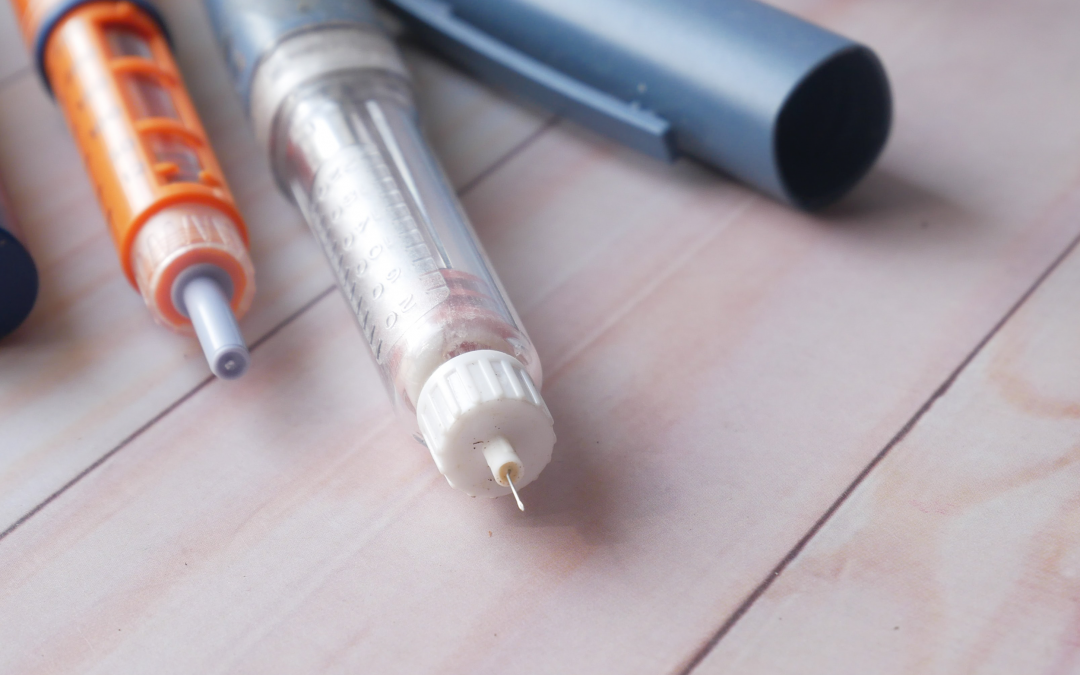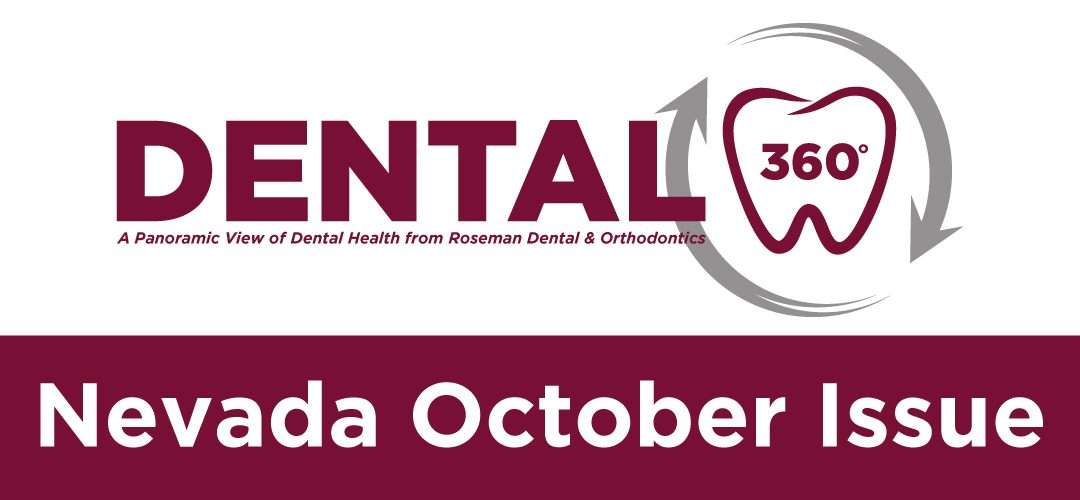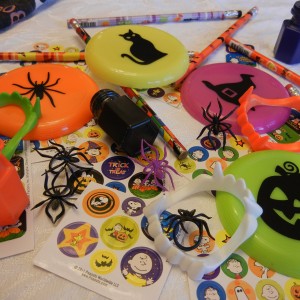
by Roseman Dental | Nov 9, 2021 | Dental Clinic Blog, Oral Health, Roseman Dental - NV, Roseman Dental - UT
Spending your day in the dentist’s chair having plaque scraped from teeth is no fun. While it is necessary to go to your dentist for regular cleanings, there are also some things you can do to prevent plaque build-up before you get to the dentist. Most people would probably rather go this route because it usually means a short and uneventful checkup.
Plaque 101
Plaque is a sticky layer of bacteria and sugars. It forms a film on teeth that makes them feel rough to the tongue. Acids in plaque attack the teeth, which eventually leads to cavities. When plaque forms below the gumline and between teeth, the bacteria may also begin to attack the sensitive tissue of the gums, leading to gum disease. As gums become infected, they pull away from the roots of the teeth and form pockets full of bacteria and pus. This can lead to tooth loss, as well as a number of other serious health problems.
Preventing Plaque Buildup
Although everyone develops plaque, no one has to put up with it on their teeth. Proper brushing and flossing techniques successfully remove most plaque. Since plaque is continually produced from the reactions of bacteria, saliva, and food, brushing and flossing should be done at the beginning of the day and the end, as well as after meals or after consuming drinks or foods high in sugar. In some cases, brushing and flossing within thirty minutes of eating or drinking may harm enamel softened by acid, so it’s best to wait a little while after eating before you brush.
Proper Brushing Technique
The American Dental Association recommends using a soft-bristled toothbrush that is small enough to reach all areas of the mouth. Make sure you’re using a toothpaste that contains fluoride, which strengthens tooth enamel. The bristles should move gently along the gums and teeth at a 45 degree angle in short, circular strokes that cover all the surfaces of each tooth. Brushing the tongue is also recommended to remove excess bacteria.
Proper Flossing Technique
Floss is the most effective tool for fighting plaque. The floss should be guided between teeth with a gentle back and forth motion, following the sides of each tooth all the way up to the point where it meets resistance at the gumline. Although it is best to floss every day, even flossing three or four times each week is helpful in removing some plaque, protecting the gums from disease, and shortening the time in the dental chair.
Even if you follow all these tips for removing plaque, there is still no substitute for a dental checkup and cleaning (recommended every six months). However, if you keep your teeth clean in between checkups, your next dentist visit should be quick and easy. Make an appointment at Roseman Dental for a full check-up from one of our highly qualified and compassionate providers.

by Roseman Dental | Nov 9, 2021 | Dental Clinic Blog, Oral Health, Roseman Dental - NV, Roseman Dental - UT
November is National Diabetes Month. In honor of diabetes awareness, consider the link between diabetes and oral health. Diabetes is very closely linked to overall health, and the two can have a big impact on one another. If you or someone you know is diabetic, take time to learn about this important connection.
The Connection
Simply put, having diabetes increases the risk of gum disease and periodontitis, or serious gum disease. This is due in part to a diabetic person’s decreased ability to fight bacteria. If your blood sugar levels are not well under control, your ability to fight germs is compromised, making infection of any kind more likely. Other infections that can occur in your mouth include thrush (a mouth fungus overgrowth that causes an infection), dry mouth, ulcers and cavities. Serious gum disease can also affect your blood sugar levels, increasing the rate at which diabetes progresses.
What is Gum Disease?
Gum disease is caused by bacteria in your mouth. When gum disease becomes serious, your gums begin to pull away from your teeth, leaving pockets between the gums and teeth that can fill with bacteria and other germs. As the pockets grow deeper, the infection can spread and destroy the bones that hold your teeth in place. If this happens, surgery may be needed to preserve the teeth. Without treatment, teeth can loosen and may fall out.
Warning Signs
Gum disease doesn’t happen overnight. Recognizing the warning signs and seeking treatment can prevent tooth loss from infection. Unfortunately, many of the warning signs of gum disease are painless. The most obvious signs are bleeding, swollen, or tender gums. Even if they don’t hurt, bleeding gums are an indication of an overgrowth of bacteria in your mouth, as are swollen or tender gums. If you notice that your teeth look longer, this may indicate that the gums are pulling away from the teeth, another sign of developing gum disease. If pressing on the gums produces pus or if adult teeth are loose or moving, this is also a sign of serious gum disease. Lastly, if you notice changes in your bite or the fit of dentures or bridges, you should speak with a dentist about gum disease.
The best way to prevent serious gum disease from developing is to see a dentist regularly, at least every six months. It’s also a good idea to see the same dentist, because then he or she can recognize subtle changes in your gums that may not be obvious if you are seeing different dentists each time you get your teeth cleaned. If you have serious gum disease, the dentist may recommend that you come in more often than every six months.
Prevention
If you have diabetes, a well-regulated blood sugar level is your first defense against gum disease, and all other infections. Beyond that, brushing and flossing twice daily will help keep your mouth healthy, as will regular visits to the dentist. While at the dentist, be sure to discuss your diabetes and its relationship to good oral health. Diabetes can make you more susceptible to gum disease, but that doesn’t mean there is nothing you can do. Heeding the warning signs and caring for your teeth and gums will help your mouth stay healthy for years to come.

by Roseman Dental | Oct 13, 2021 | Dental 360, Dental Clinic Blog, Roseman Dental - NV
Halloween is almost here! In this October issue of Dental 360°, you’ll find out which Halloween treats have scary effects on your teeth. You’ll also get advice about handling fear about going to the dentist and you’ll learn why many people have been neglecting their oral health during the pandemic. And hey, did you know that you probably need a new toothbrush?
Roseman Dental & Orthodontics’ Dental 360° is a monthly e-newsletter. Each month you’ll receive a panoramic view of dental health. Dental health is key to your overall health and here at Roseman Dental & Orthodontics, we are dedicated to improving not only your mouth, but your whole self. At our clinic we have an excellent team of licensed dentists, orthodontists, orthodontic residents – 30 to be exact, and dental residents all focused on you and your family’s oral health. Roseman Dental & Orthodontics has been serving its community since 2009 and is a comprehensive, one-stop shop for all your dental needs including dental, orthodontic and craniofacial cleft lip & palate treatment.
We hope you find Dental 360° helpful and informative. We look forward to connecting with you each month.
Dental 360° October Articles
Oral Health and COVID
Best and Worst Halloween Treats for Dental Health
Toothbrush Care
Coping with Dental Phobia and How to Overcome
Subscribe to e-newsletter

Click Here to Leave a Review

by Roseman Dental | Oct 12, 2021 | Dental Clinic Blog, Oral Health, Roseman Dental - NV, Roseman Dental - UT
For many people, a trip to the dentist is not at the top of their list of favorite things to do. However, most can get through a checkup with relatively low levels of fear or anxiety. For those who have a dental phobia, even thinking about going to the dentist is enough to cause panic. If you are someone who avoids dental offices due to your inability to deal with the sounds, feelings and overall experiences you associate with an oral cleaning or other dental care, then you could be exposing yourself to negative health consequences caused by inadequate oral health.
Pinpoint your fear, and use these tips to manage it:
Fear of the Unknown
If showing up at the dentist and not having a clue what you are about to undergo sends you into a tailspin, then you may benefit from having a full explanation of all procedures prior to your visit. Make sure that your doctor understands your concerns and is willing to discuss your appointment in advance, whether in person, over the phone, or via video call.
Fear of the Dentist
For some people, the dentist himself is an ominous presence that causes fear. A dentist who only comes into the room for a few moments to inflict pain, all while wearing a mask, can be worrisome. If possible, find a professional who can help you break down the doctor-patient barrier by speaking with you, sitting at eye level, and taking other steps to lessen the tension in the room.
Fear of the Equipment
The tray of equipment next to your chair can look like a line-up of torture devices. The equipment can be loud, sharp and terrifying, but if you take the time to hold and inspect each item, you may find that they are not that scary after all. Talk to your dentist about doing this if it’s the instruments that frighten you.
Fear of Feeling Out of Control
Lying back in the examination chair and letting other people look into the mouth can make some patients feel out of control of their situation. If this is the case for you, ask your doctor if you can be leaned back partially or even assist with the process by holding a tool.
The dentist does not have to be a stress-inducing experience if you are willing to work towards feeling more comfortable in the chair.
Providers at Roseman Dental are committed to providing compassionate care to all patients. They’ll talk through your questions and concerns with patience, understanding, and expertise. Make an appointment today and send your fears down the drain (right along with your plaque, and any other mouth germs).

by Roseman Dental | Oct 12, 2021 | Dental Clinic Blog, Oral Health, Roseman Dental - NV, Roseman Dental - UT
Although your toothbrush might look clean when it sits on the ledge of the sink, the bristles could actually be contaminated with microbial organisms that came from your mouth. Those can live on the bristles for weeks. Fortunately, there are some things you can do to keep your toothbrush clean and effective so you can get good use out of it.
Wash Your Toothbrush
Before and after use, rinse the brush with water to remove debris. You may also want to think about investing in a special device, such as a toothbrush sanitizer, that cleans it much more thoroughly and has built-in technology to kill the aforementioned germs.
Store Your Toothbrush Correctly
Keep your toothbrush stored upright in a position that allows it to dry out. Think about using a bristle cover that promotes airflow through small holes. Some people think that keeping the bristles completely covered is ideal, but that trapped moisture can actually foster bacterial growth on the brush.
Know When to Throw the Brush Out
Your toothbrush isn’t designed to last forever. Replace it every three to four months, or whenever the bristles start to show signs of wear. Take a look today! If the bristles are fraying, or bending downwards or sideways instead of standing up straight, it’s time to pick up a new brush.
Don’t Share Your Toothbrush
You should be the only one who uses your toothbrush. Our mouths can be homes for hundreds of different bacteria and viruses. Sharing is a surefire way to spread disease, from a cold to gingivitis, and even HIV or hepatitis B. Although it’s tempting sometimes, don’t share the brush with a significant other or another person in your household.
Replace Brushes After Illnesses
You’ve already learned how germs can live on toothbrushes for a long time. It should make sense then that you need to throw away any toothbrushes a person has used while he or she was sick.
Use these tips to make sure you have a clean toothbrush that will be able to keep your mouth and teeth just as clean.
Toothbrush hygiene is just part of keeping up with your dental health! Regular cleanings and exams are important ways to make sure your teeth stay looking and feeling good. If you don’t have an upcoming appointment somewhere on your calendar, schedule an appointment at Roseman Dental.

by Roseman Dental | Oct 12, 2021 | Dental Clinic Blog, Oral Health, Roseman Dental - NV, Roseman Dental - UT
 Halloween is a time of year when ghosts, ghouls, princesses and superheroes alike head out into their neighborhoods in search of scrumptious candy. It’s also a holiday that can wreak havoc on your oral health because of the volume—and type—of candy and sugar you are consuming. Whether you’re planning to dress up for a Halloween party, wondering what to give out this year, or just want to be prepared for when your kids bring home buckets of sugar, here are some tips to help you avoid oral health problems.
Halloween is a time of year when ghosts, ghouls, princesses and superheroes alike head out into their neighborhoods in search of scrumptious candy. It’s also a holiday that can wreak havoc on your oral health because of the volume—and type—of candy and sugar you are consuming. Whether you’re planning to dress up for a Halloween party, wondering what to give out this year, or just want to be prepared for when your kids bring home buckets of sugar, here are some tips to help you avoid oral health problems.
Best Halloween Candies for Your Teeth
While your dentist will tell you (correctly) that no candy is actually “good” for your teeth, there are some options that are less bad and should be selected when possible. That includes things like chocolate without sticky fillings or nuts, marshmallows, and softer cookies that won’t stick to your teeth (check out the recipe for a delicious pumpkin season treat below). Even if you avoid sticky treats, it’s important to realize that the sugar in candy feeds bacteria in your mouth, contributing to the buildup of plaque, so you should rinse your mouth with water and try to brush your teeth soon after consuming any sugar.
Worst Halloween Candies for Your Teeth
Sticky treats are by far the worst because they leave sugary nuggets in the deep grooves of your teeth where they are available for bacteria to feed on. That includes things like taffy, caramel, coconut and nuts. Other bad choices include hard candies like lollipops, jawbreakers, and Jolly Rancher™ candies, because they expose your teeth to sugar for a prolonged period of time while they are dissolving (which raises acidity levels in your mouth and damages tooth enamel). Plus, if you try to bite them, your teeth might even chip or break. Sour candies should be avoided because they are highly acidic, as well as candies like Pixie Stix® powder that provide straight sugar for the bacteria in your mouth to consume.
Individuals with braces should be especially careful about eating these treats. Make sure to speak with your orthodontist prior to Halloween to get a list of treats to specifically avoid because they can get stuck in and around the braces, causing decay and damaging the hardware in your mouth.
Healthy Candy Alternatives
 If you plan on being home to pass out treats for trick-or-treaters, there are various healthy, non-candy alternatives you can give to those who come knocking on your door. Healthy alternatives include mini packages of raisins, pretzels, or crackers, which can be purchased at your local grocery store and are typically in Halloween-themed packaging.
If you plan on being home to pass out treats for trick-or-treaters, there are various healthy, non-candy alternatives you can give to those who come knocking on your door. Healthy alternatives include mini packages of raisins, pretzels, or crackers, which can be purchased at your local grocery store and are typically in Halloween-themed packaging.
For folks who want to avoid handing out any food items to trick-or-treaters, there are plenty of things available at a reasonable price. You could hand out pencils, stickers, erasers, slime, spider rings, mini coloring books, temporary tattoos, or plastic vampire fangs. You can find all of these in Halloween designs, and buy them in bulk at places such as Oriental Trading Company, U.S. School Supplies, and Amazon.com.
Check out this braces- and teeth-friendly recipe to enjoy for Halloween and the fall season:
Pumpkin Chocolate Chip Cookies
1 cup pumpkin puree (canned)
1 cup granulated sugar
1/2 cup vegetable oil
1 egg
2 tsp. milk (whole)
1 tsp. vanilla
2 cup all-purpose flour
2 tsp. baking powder
2 tsp. pumpkin pie spice
1/2 tsp. salt
1 tsp. baking soda
1 tsp. chocolate chips (mini)
Directions
- Combine pumpkin puree, sugar, vegetable oil, egg, milk, and vanilla; set aside
- Combine together all dry ingredients, except for chocolate chips; add to wet ingredients, combine well
- Stir in chocolate chips
- Bake at 350 °F for 10-15 minutes











